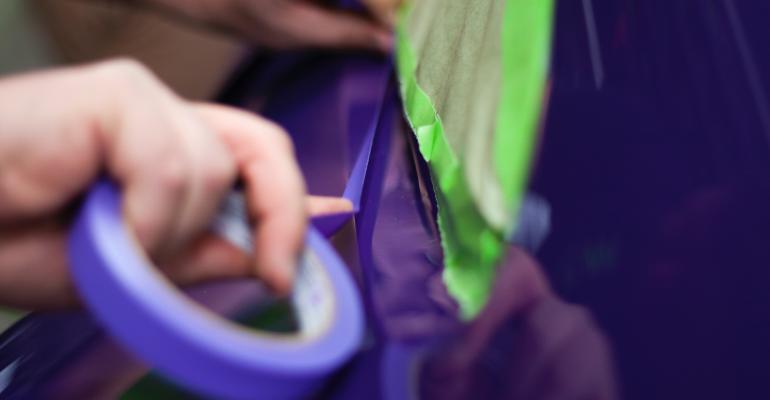LAS VEGAS – Dealers high-five staff for sales. They high-five them for acquisitions. When was the last time you heard of a dealer high-fiving an employee for quick, cost-efficient used-vehicle reconditioning?
Former car dealer Mike Boyd is a realist. As the founder of Cox Automotive’s IRecon, used-vehicle reconditioning software, he knows that no one celebrates the investment necessary to get a used vehicle ready for resale. But they should, he says, because they control reconditioning, a service that can lessen vehicle-acquisition costs and build profits.
“The market determines what you can pay for a car. And the market is going to determine what you can sell a car for. So where can you truly make a difference?” he asks attendees at the recent Digital Dealer conference. The answer, Boyd says, is reconditioning, a commonality shared by the 17,000-plus franchise and 38,000-plus independent dealers in the U.S. Everything from transporting a car from auction to choosing what areas to revitalize or fix is part of reconditioning. And money spent on those items comes out of the dealerships’ pockets.
“That’s my own money,” he says. “Who do I allow to spend it? How are they spending it? And are they spending it the way I want, or don’t they even have an idea of what they’re doing?”
One of the best ways to minimize such expenses is to develop a reconditioning infrastructure akin to a manufacturer’s vehicle assembly line. Yet few dealers do so, instead relying on a handful of employees to oversee the reconditioning process.
“The very sad part is that more than 75% of the dealers are winging it,” he says. “They do not use software to manage the reconditioning process, although we use software for every single other thing we do.”
That results in needless expenses and potentially even a loss in revenue.
Effective reconditioning infrastructures and timelines vary widely depending on the manufacturer, dealership location and other variables. Boyd suggests dealers begin to develop infrastructures and then continually refine them. Then, yes, high-five staff when small victories, such as time saved on carpet reconditioning, are complete.
When dealers begin to develop a process, they should consider what Boyd says are the facts that dispel seven reconditioning myths:
- Myth: The ideal reconditioning window is three days or less.
Truth: There are a lot of variables at each dealership. Track the timeline of what is done through the reconditioning process and then look for ways to improve it. It’s imperative to understand the time spent on each task. One example is the time it takes to transport a car from an auction to a store. If it takes more time than you budgeted, you need to understand why and work to minimize that.
- Myth: Spending less is best in reconditioning.
Truth: Technically, yes. But it’s a good idea to think of reconditioning a car like rehabbing a house. That comes down to cost vs. investment. One dealership where Boyd worked did wheel repairs for every reconditioned car. When the dealership eliminated cosmetic wheel repair, sales did not decrease. “Data will show you things about your dealership you never know and get your people thinking,” he says. “Is it the right thing to do, or something we have just always done?”
- Myth: Front-line ready is the best metric to evaluate reconditioning performance.
Truth: Some dealers define front-line ready as photos posted on the web. Many dealers hide their cars from the market until they are fully reconditioned because they don’t want shoppers to see them before they are ready for sale. Redefine front-line ready as prepared for sale.
- Myth: Standard reconditioning estimates in appraisals are good enough.
Truth: Appraisals should follow a standard process, just like reconditioning. A key is for appraisers to log line items and the actual costs of those parts, service and other work. Review them and tweak the process as needed.
- Myth: It’s always best to keep reconditioning in-house.
Truth: This works in some dealerships, but a shortage of technicians and delayed service time for customers can result in a loss of profits.
- Myth: All cars are equal in reconditioning.
Truth: No, they aren’t. Consider inventory needs and the shelf life of each vehicle.
- Myth: Reconditioning is not sexy.
Truth: It impacts all departments. When you understand your reconditioning process, it can ensure you don’t lose money. Plus, customer loyalty starts with solid reconditioning. If reconditioning is done strategically, it is a profit center. And money, says Boyd, is sexy.





